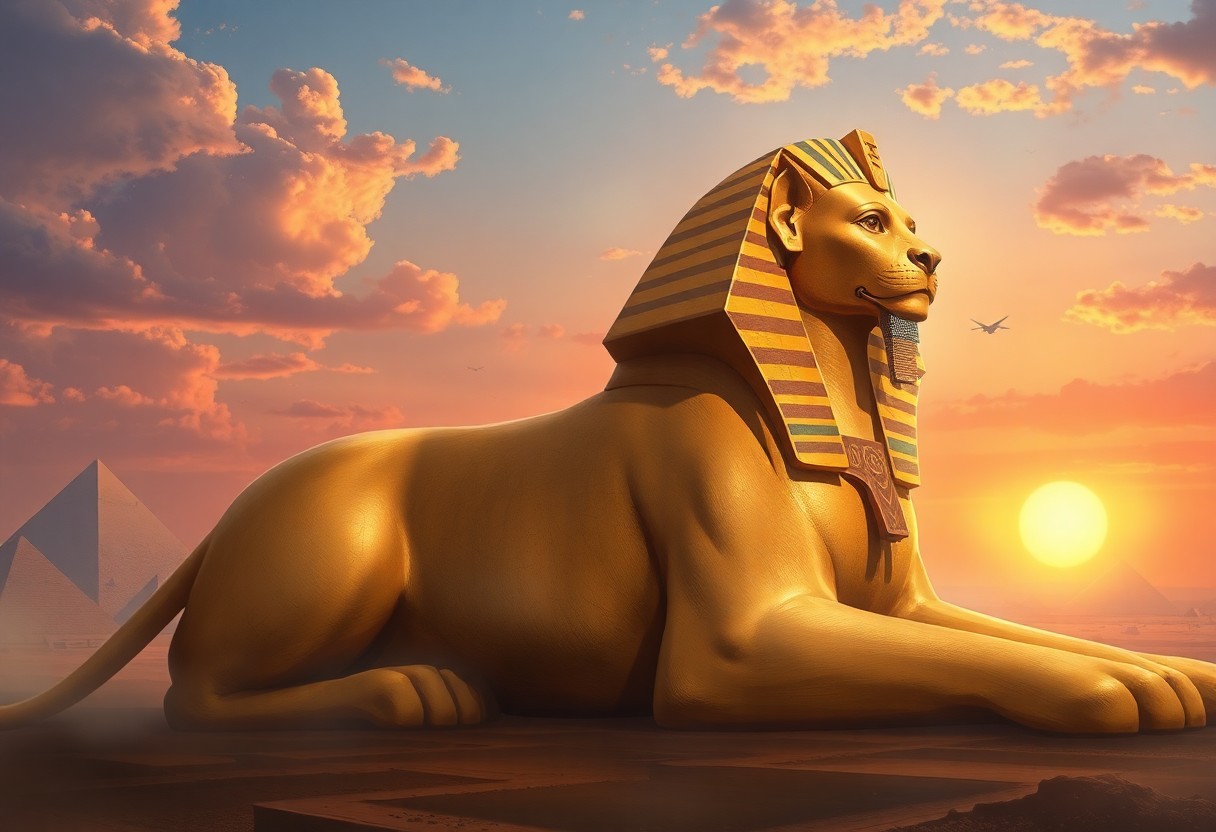Historical Background
Your understanding of the Sphinx begins by exploring its rich historical backdrop. Emerging from the sands of ancient Egypt, this mythical creature has long captivated the imagination of scholars and adventurers alike. The Sphinx embodies various aspects of Egyptian culture, philosophy, and art, making it a pivotal figure in understanding the civilization’s beliefs and societal structures.
Origins of the Sphinx
After tracing its origins, you’ll uncover that the Sphinx likely dates back to the Old Kingdom of Egypt, around 2500 BCE. Initially, it may have represented the Pharaoh’s might, serving as a guardian of sacred spaces. Over time, its form and symbolism evolved, intertwining with both local and foreign legends.
The Sphinx in Egyptian Mythology
Between mythology and reality, the Sphinx emerges as a significant figure in ancient Egyptian lore, characterized as a protector of the Pharaohs. Its dual nature—a lion’s body and a human head—symbolizes strength and intelligence, qualities revered in ancient culture.
Background tales surrounding the Sphinx often intertwine with themes of wisdom and challenge, as seen in the infamous riddle posed to Oedipus. This mythological narrative highlights the Sphinx as not merely a guardian, but also as an enforcer of knowledge and truth, central to the moral fabric of Egyptian society.

Cultural Impact
Now, you may wonder how the Sphinx has shaped various aspects of culture throughout history. This enigmatic figure has sparked the imagination of countless artists, writers, and thinkers, making a lasting mark on the realms of art and literature. Its mysteries have woven themselves into the fabric of storytelling, symbolizing the challenges of knowledge and the power of enigma that resonates with audiences across generations.
The Sphinx in Art and Literature
Behind its stoic visage, the Sphinx has inspired a myriad of artistic interpretations and literary works. Artists have captured its grandeur in sculptures, paintings, and contemporary installations, while authors have used it as a potent symbol of riddle and wisdom in myths, dramas, and epic tales. You can see how these creative expressions reflect not only the allure of the Sphinx but also deeper philosophical inquiries into human existence.
Modern Interpretations and Representations
The Sphinx’s legacy continues to evolve with modern interpretations that challenge traditional narratives. You may notice that contemporary artists recreate the Sphinx in various forms, such as urban graffiti, digital art, and performance pieces. This reinvention invites you to question the meaning behind the Sphinx and its relevance in today’s society.
Another interesting facet of modern representation lies in the Sphinx’s role in popular culture, where it often embodies themes of mystery, duality, and the unknown. Think about how films, video games, and literature frequently invoke the Sphinx as a metaphor for the complexities of knowledge and the human psyche. This ongoing engagement allows you to explore various interpretations of the Sphinx, enriching your understanding of its multifaceted nature in contemporary discourse.





